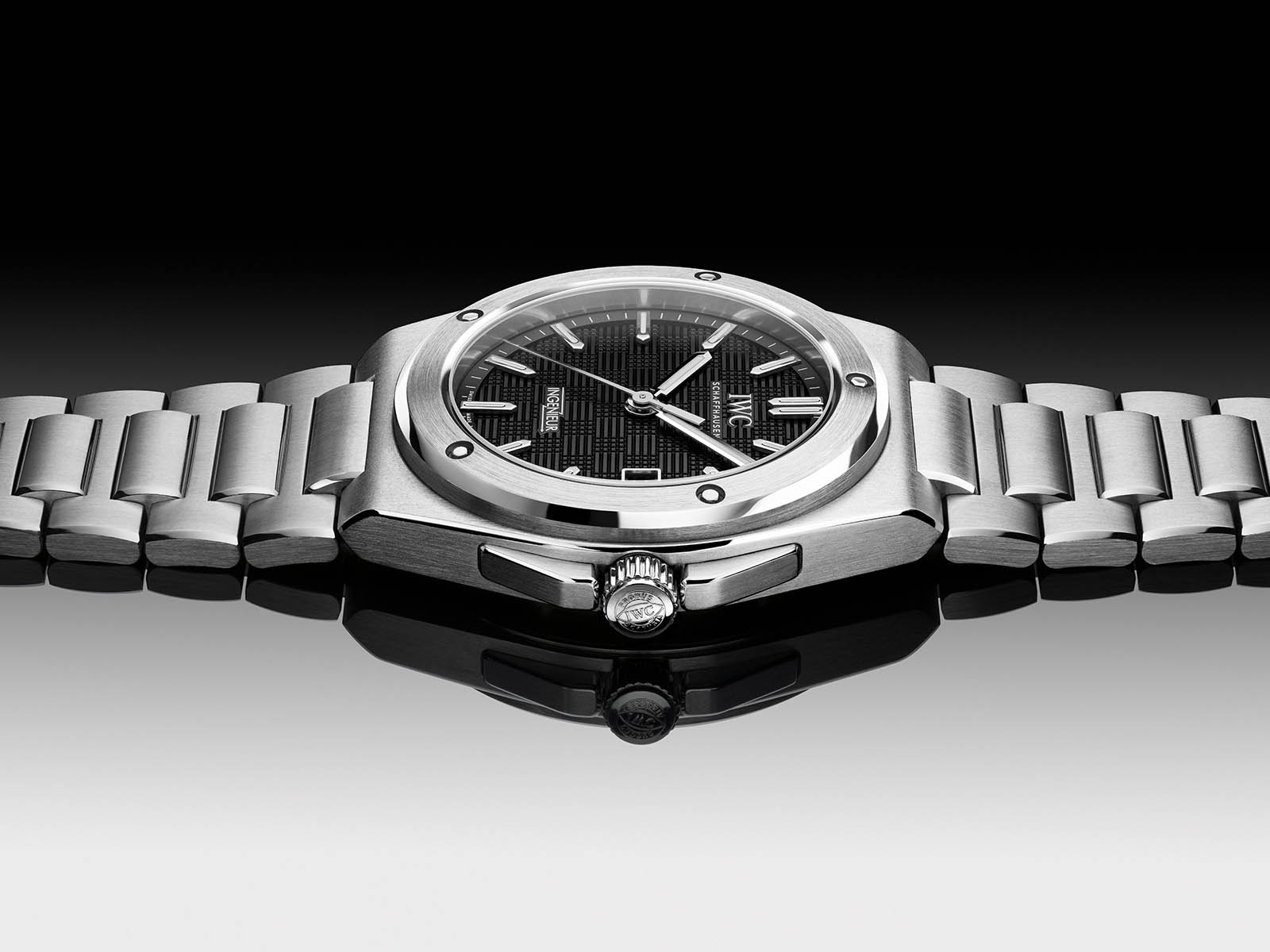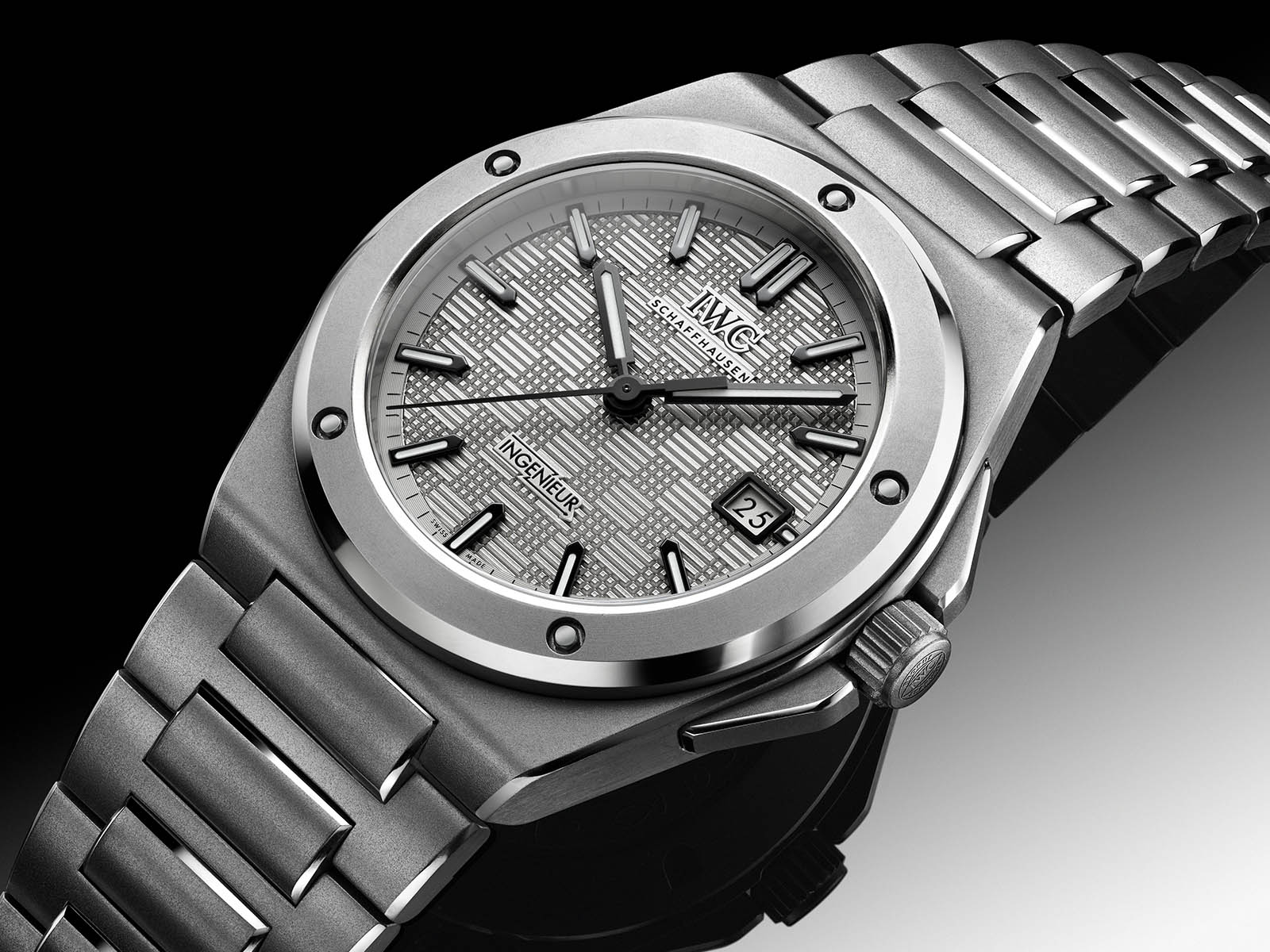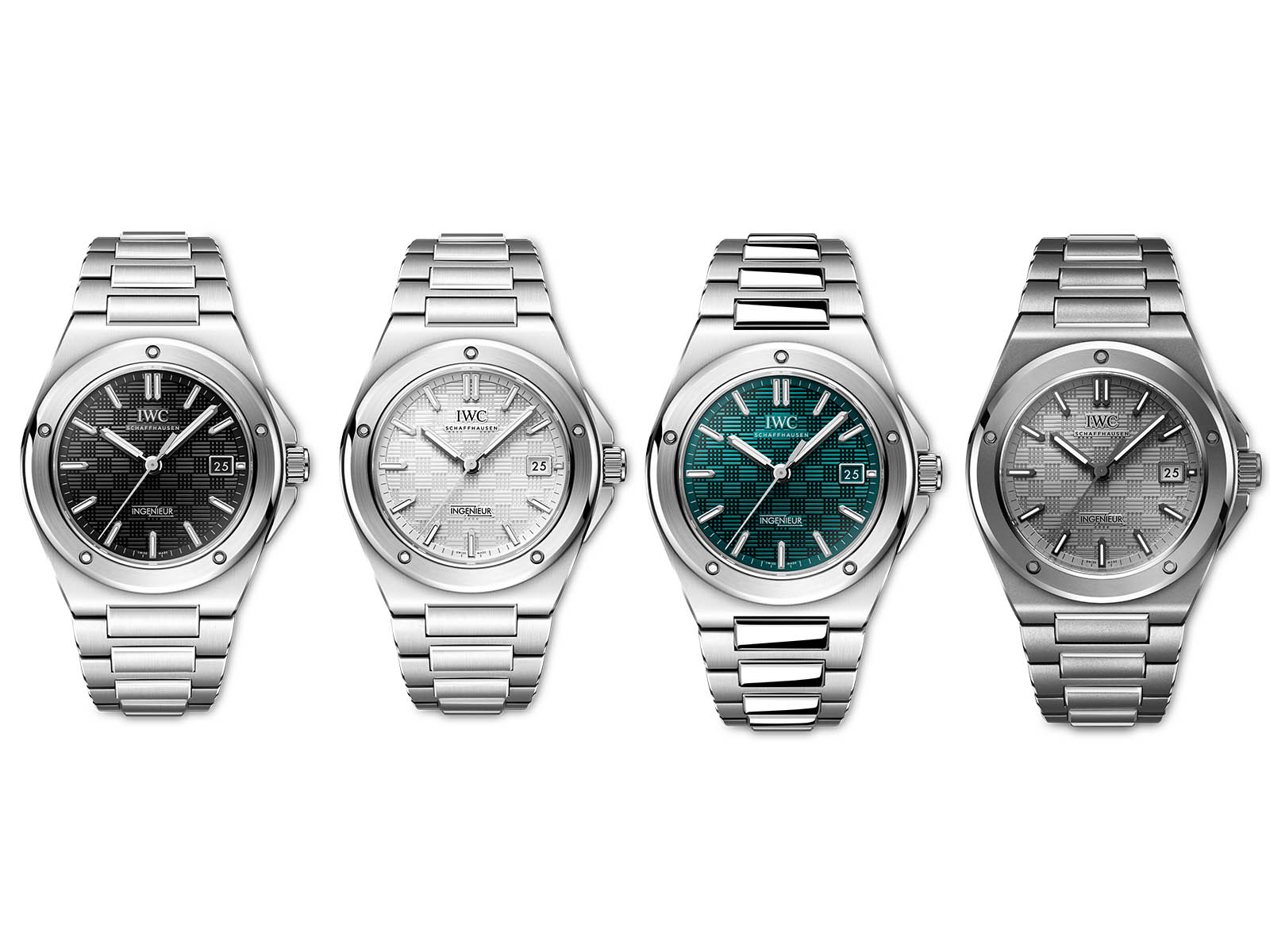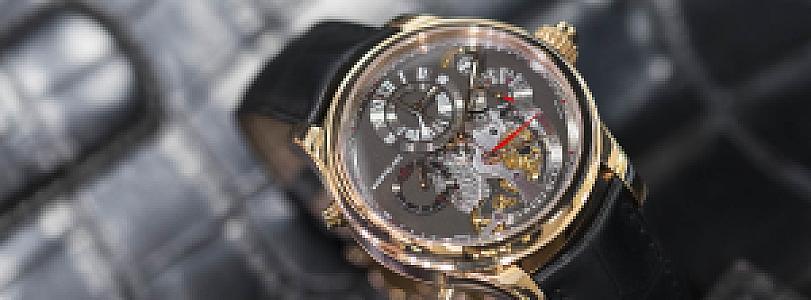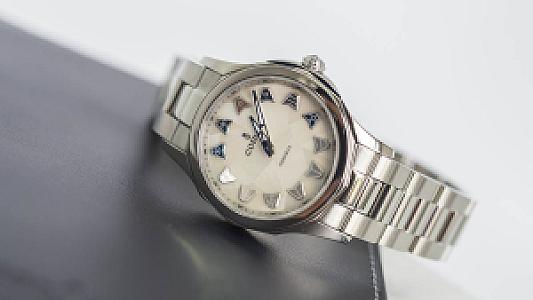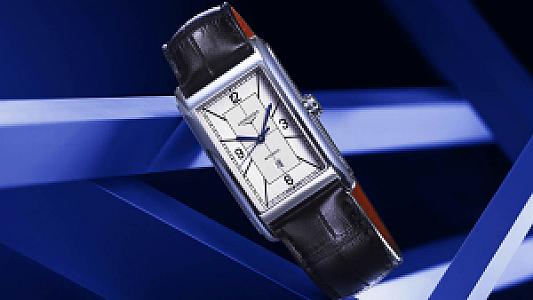Celebrated watch designer Gérald Genta created the Ingenieur SL for IWC Schaffhausen in the 1970s. The Swiss luxury watch manufacturer has now enhanced his iconic design to produce a modern interpretation, perfected down to the smallest detail. Christian Knoop, IWC’s Chief Design Officer, reviews a development process that has taken several years.
What is the significance of this collection?
More than any other watch, the Ingenieur embodies IWC’s engineering spirit and the brand’s strictly technical and design-oriented approach. It was initially developed for professionals such as engineers, physicists, and doctors, whose work exposed them to strong magnetic fields. The first Ingenieur, Reference 666, was a technical milestone. It was powered by the Caliber 8531, the first automatic movement developed in-house by IWC with the highly efficient Pellaton winding system. A soft-iron inner cage effectively shielded the movement from magnetic fields. This technology had originally been developed for the Pilot’s Watch Mark 11, a professional navigation watch engineered in 1948 for the British Royal Air Force.
How would you describe the age that saw the launch of the Ingenieur?
In the 1950s, people were fascinated by technology, and engineering was the embodiment of innovation, progress, and prosperity. Back then, engineering achievements laid the foundations for new forms of architecture and design that occurred repeatedly in many of the products and everyday objects of that period. This sense of optimism and the widespread belief in technical progress was also expressed in the name chosen for the new watch family: Ingenieur, the French word for “engineer”, which is also used in German.
What was so outstanding about his achievement?
The first Ingenieur, launched in the 1950s, had a round and rather understated case. Thanks to Gérald Genta’s inspired contribution, the watch finally had a face. For the Ingenieur SL, Reference 1832, he relied on bold aesthetic cues such as a screw-on bezel with five recesses, a checkerboard-pattern dial, and an integrated bracelet with H-links. These gave the watch its distinctive character and made it instantly recognizable. Genta thus achieved something we might refer to today as strategic development of the product’s DNA. Using these pronounced, recognizable design cues, IWC has been able to vary the Ingenieur slightly again and again over many decades without sacrificing Gérald Genta’s artistic signature.
How should Genta’s work be assessed in terms of historical perspective?
In the 1970s, Gérald Genta succeeded in creating an entirely new category of luxury watches. Rugged, water-resistant, yet elegant steel sports watches with integrated metal link bracelets replaced classic gold watches. With creations like the Ingenieur SL, Gérald Genta is the undisputed master of this category. But these steel sports watches were also in keeping with the spirit of the times. The boundaries between work, leisure, and sport became increasingly fluid – a development that helped shape watch aesthetics.
Why didn’t IWC simply reissue the original?
Initially, we discussed that idea but quickly discarded it because merely reissuing a historical design does not fit in with our aspirations for the Ingenieur collection. As engineers and designers, continuously improve and perfect something that already exists in our DNA. Evelyne Genta, Gérald Genta’s long-time spouse, business partner, and founder of the Gérald Genta Heritage Association, told us her husband was constantly developing his ideas and refused to cling to old designs. Ultimately, that encouraged us to take the Ingenieur SL as the starting point for a new and contemporary interpretation.
And where did this journey lead?
The result is the Ingenieur Automatic 40. The new automatic model reflects the unique character of the iconic design from the 1970s while meeting the highest possible ergonomic and aesthetic demands. We’ve spent years fine-tuning the proportions of the case and perfecting it down to the tiniest detail. And we must remember that manufacturing techniques have made huge strides forward since the 1970s. The new Ingenieur has an astonishingly high level of detail and outstanding quality in processing and finishing – evidenced, among other things, by the combination of polished and satin-finished surfaces.
How did you set about improving the ergonomics?
We aimed to make a perfectly proportioned 40-millimeter case that would ensure the watch fitted snugly even on a slim wrist. So, over the years, we have produced countless prototypes in steel, continually checking how they feel on the wrist and further improving the case proportions. The Ingenieur SL had a relatively wide bracelet and nose-shaped horns that increased the length of the case. That is why we developed a new middle-link attachment, which is aesthetically comparable but more ergonomic, providing a better fit on the wrist. Another factor is the slight curve in the case ring, which further improves ergonomics.
The distinctive bezel is one of the central features of Genta’s design. How did IWC adapt it for the new Ingenieur?
We spent a lot of time tweaking the bezel’s proportions and finishing. The most obvious difference, however, is that we have used genuine polygonal screws. For the Ingenieur SL, the bezel with the five recesses was simply screwed onto the case ring. The position of the recesses was purely random, and they were never in the same place. I’m a perfectionist, so that always bothered me. With the Ingenieur Automatic 40, five screws now secure the bezel to the case ring. The screws have a technical function and, as a result, are always in the same position.
One of the striking features of the Ingenieur is the dial with its relief-like structure. How did you enhance this part?
Similar to Reference 1832, the Ingenieur Automatic 40 features a
dial with a structure that we now call “grid”. The pattern consists
of lines offset by 90 degrees to each other and stamped into the
soft-iron blank before it is galvanized. It covers the entire inner
area of the dial, while the outer area around the chapter ring
remains smooth. We also painstakingly balanced the proportions of
the IWC logo and its position on the dial and alignment with the
Grid down to thousandths of a millimeter. Finally, appliques with
luminescence ensure great legibility, even at night.
What else have you perfected?
We have optimized countless details you would hardly notice at first glance. For instance, the upper parts of the bracelet now contain closed links without visible pins. This feature not only enhances its overall quality but also underscores the superb finish. The integration of a clean, simple butterfly folding clasp gives full rein to the beauty of the bracelet. Another example is the slightly curved front glass. It is even more finely tuned to the overall proportions of the watch, underscoring its value and sophistication.
What are the individual parts of the new collection?
The Ingenieur Automatic 40 comes in stainless steel with the choice of black, silver-plated, or aqua dials. Aqua is a new dial color, a fascinating shade between green and blue. We are also making another version in titanium. IWC pioneered the use of titanium in the 1980s. This light, hard-wearing metal epitomizes IWC’s engineering and material expertise and is, therefore, a perfect match for the Ingenieur.
What about the mechanics inside the case?
All the models in the collection are powered by the IWC-manufactured Caliber 32111 with an automatic pawl-winding system and a power reserve of 120 hours. In keeping with the Ingenieur tradition, the watches all feature a soft-iron inner case that shields the movement from the adverse effects of magnetic fields on its accuracy. And, as you would expect of a modern sports watch, the cases are water-resistant to 10 bar, making the Ingenieur Automatic 40 an enormously versatile companion, suitable for both work and leisure.
Could you describe what the creative process was like for you and your team?
It’s not every day that a designer gets the chance to work on reinterpreting an icon like the Ingenieur SL. Gérald Genta’s achievement deserves the utmost respect. We were aware of the enormous responsibility it entailed and proceeded very cautiously. We discussed every visible change intensively and asked ourselves whether we could justify certain specific interventions. But when Evelyne Genta told us her husband would certainly have approved of the new Ingenieur Automatic 40, it felt like a well-deserved reward for all the passion and hard work that had gone into the project.



